You may have read the recent retrospective review of the Sharpe series and thought to yourself “Self, I love this series of novels and movies and would literally die for Richard Sharpe in the dust at Talavera – how would I game it though?” Well Self, we at Goonhammer Historicals are here to help you figure that out. We’re also here to help you figure out any other conflict you’d like to game in the black powder period using Sharp Practice. All of the following conflicts have force lists in the main Sharp Practice rulebook.
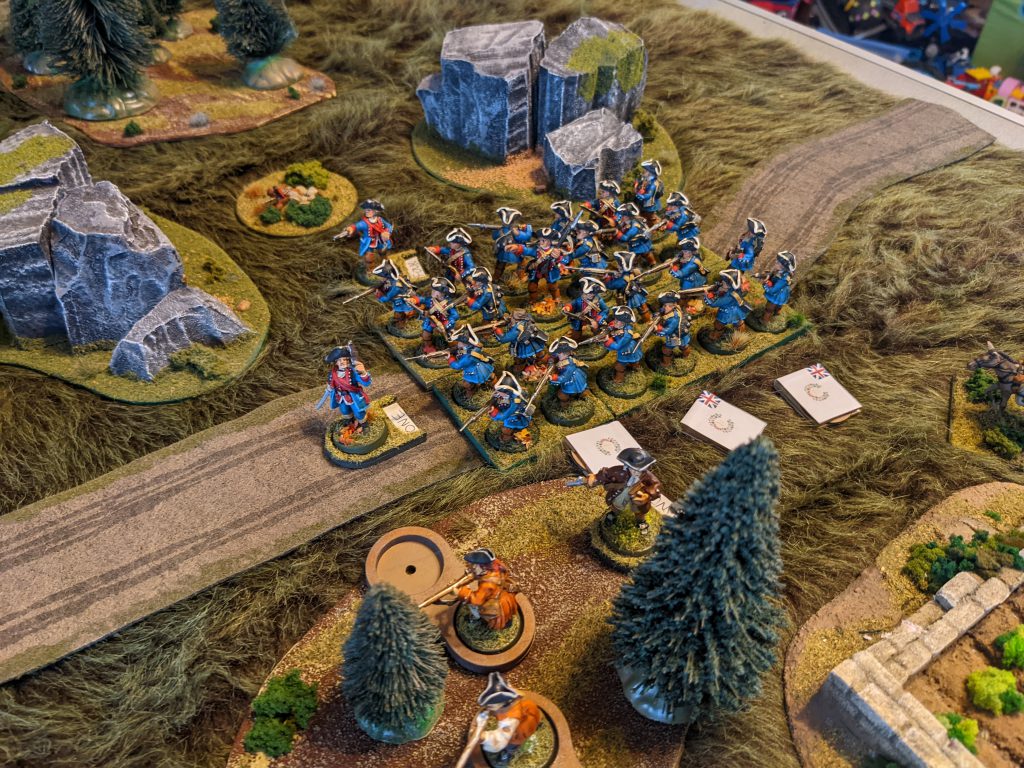
French and Indian War
The French and Indian War took place on the American continent from 1754-1763 as a theater of the Seven Years War between France and Britain. As the period goes this is one of the first black powder conflicts we can game with Sharp Practice. The humble smoothbore flintlock musket was the readily available firearm of the war which most troops were equipped with.
American Indians fought for both sides as irregular troops using tactics much different from the European continent lines of battle. Most battles were fought in forested wilderness except for some sieges at forts and the final battles in Canada.
Pros:
- There are a lot of different troop types you can use during this period including the American Indian tribal warrior, the skirmishing Ranger, and line troops like the Grenadier or Highlander.
- The uniform variety is huge – from colorful NA garments and redcoats to muted colonial militia garb.
- Lower model count, if you wish. There were plenty of small skirmishes on the frontier.
- It’s completely feasible to play the game without formations and huge lines of guys – so you can start with skirmish lines and learn the game that way, then add formations later.
- Smoothbore muskets mean you’re going to have some time to maneuver before you get into combat.
Cons:
- Artillery did not play as large a role in this war in the wilderness, so it won’t be present as much unless you’re doing a part of a siege.
- Smoothbore muskets have a hard time hitting anything unless you get very, very close.
- Not a huge amount of cavalry was used in this war.
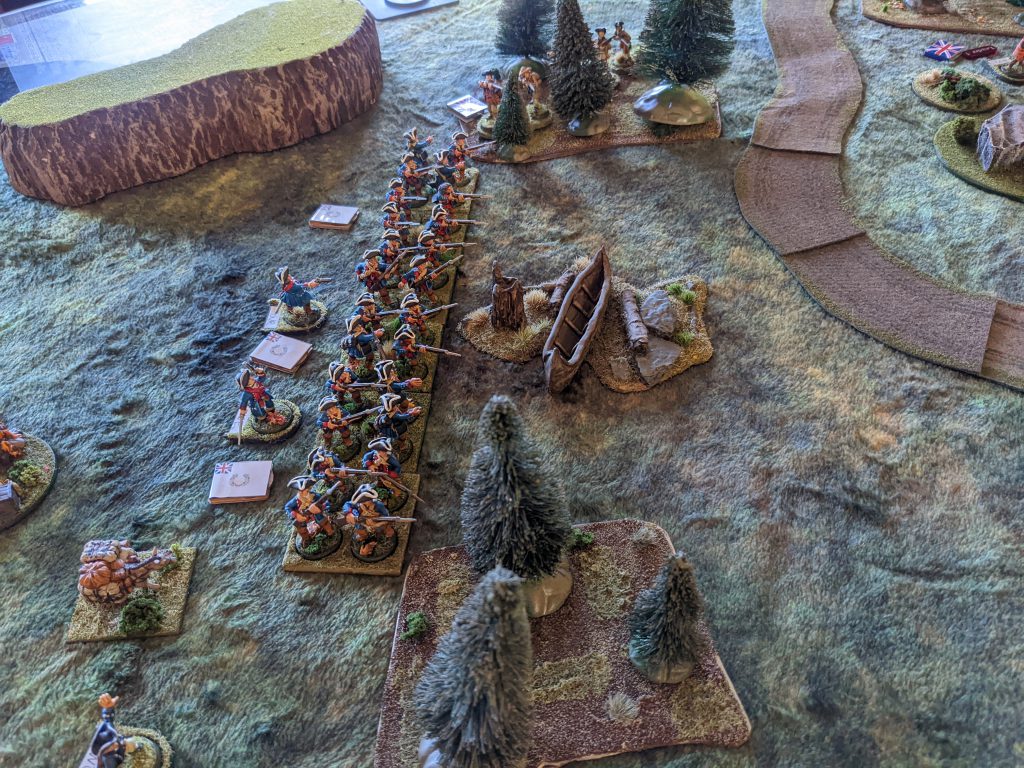
Terrain: for the FIW you’ll want a ton of trees. Just as many trees as you can gather. Put them on terrain bases so it’s easier to use in a game and you never have a question of line of sight or cover. One or two cabins will help for scenarios and you’ll want some roads or paths as well. Water is underused in a lot of BP era stuff so a small creekbed or river would help break up the battlefield.
Miniature availability: for this conflict you’re mostly going to be picking up pewter models. There are a ton of sweet minis available – Galloping Major, Blue Moon, and Warlord Games all produce great models for this time period that will help you fill out your forces.
Inspiration: this is one of the easiest bits to write as The Last of The Mohicans is basically the best movie of any conflict of this time period. It showcases a major fort battle, a few wilderness battles, and some sweet musket dual-wielding. Seriously, if you’re a wargamer and haven’t seen it you need to rectify that. There is also a PBS documentary called “The War That Made America” and it’s great.

American War of Independence (The Revolutionary War)
The AWI (or Rev War) took place from Apr 19, 1775 – Sep 3, 1783 and resulted in the United States famously overthrowing the British colonial power in the colonies. George Washington, a dude who kinda messed up a few times in the French and Indian War, goes on to lead the American Patriots™ (not the ball-deflating kind) to an unlikely victory over the hardened British regulars. There are quite a few small skirmishes, large set piece battles, and a wide variety of campaign areas – including the swamps in the south, upstate New York, and even Fort St. Joseph in southwestern Michigan.
Pros:
- There are a lot of cool scenarios you can devise for this period as the conflict was super varied and took place in a lot of different areas.
- Tons of plastic minis available
- Plenty of scenarios and extra rules written out there for SP specifically and other skirmish games more broadly.
- More cavalry and artillery than FIW.
Cons:
- For many engagements it’ll be a bit asymmetric, if that’s a con for you.
- Still in the smoothbore period so ranges are very small

Terrain: not nearly as many trees as FIW – you can setup farms, rolling fields, hills, etc. Some colonial houses in MDF would be great. Stone walls, rivers, etc will also help.
Miniature availability: there are tons of plastics available for this period. Perry Miniatures has also put out quite a few pewter minis for the various specialist troops, so you can setup small patrols of your snowflakes you love.
Inspiration: There are some really good movies and TV shows set during the period. Of late I really enjoyed John Adams, starring Paul Giamatti, and Turn, from AMC. Turn had some real cheesy events but overall the uniforms etc were cool. The Patriot is not good. History Vault has a ton of good documentaries on the History Channel before it became Swamp Stars.

The Napoleonic Wars
The one that’s on the tin, the one that everyone knows, Richard Sharpe’s absolute favorite, the one where Napoleon tried to take over Europe. Tons of countries were involved in the Third Coalition (1805), the Fourth (1806–07), the Fifth (1809), the Sixth (1813–14), and the Seventh (1815). I feel like many gamers are immediately going to look to the Peninsular War for this period as it’s very familiar. The Sharp Practice rulebook covers forces for that location.
Pros:
- Tons of plastics available, although some are very same-y ie. they’re all at the shoulder.
- The uniforms of this period are off the hook insane. Very colorful, tons of finery.
- Plenty of different countries represented, tons of options for doing cool forces for small scale battles.
- Cavalry is truly in their element in this period.
- There is a programmed campaign called The Complete Fondler that can be used.
- Richard Sharpe.
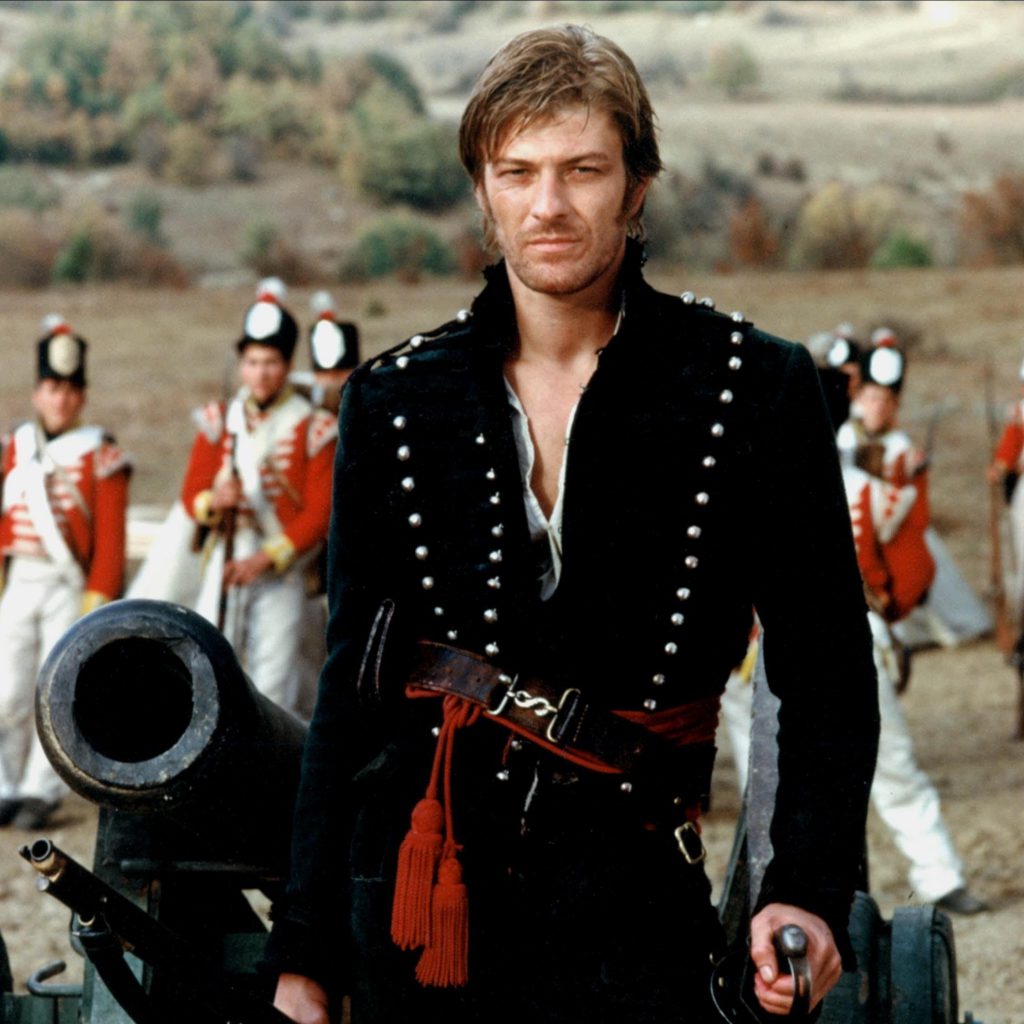
Cons:
- Uniforms can be very intimidating.
- The number of different conflicts and the number of different countries involved can be confusing.
- You get chastised by your Lieutenant if you don’t fire three rounds a bloody minute.
Terrain: much of what we’ve already talked about will work, but Europe does hit differently when it comes to buildings and even fences sometimes.
Miniature availability: Maybe the widest selection available in this article, possibly only surpassed by ACW. You can get tons of different plastics from multiple manufacturers in plenty of different scales.
Inspiration: the one and only Richard Sharpe. 16 different movies (or TV shows I guess) set from 1809 to 1818. Tons of grunting, fighting, saber slashes, and eight barrelled rifles. This series is the real inspiration for Sharp Practice – so much so that many people mistakenly call it ‘Sharpe’s Practice’ because we here in the US of A don’t realize that sharp practice is a phrase in the UK. I always mention it when people ask me about SP because in the movies Sharpe is usually leading 10-20 men and there are other small units with them, they have a mission, there are other characters involved, etc.
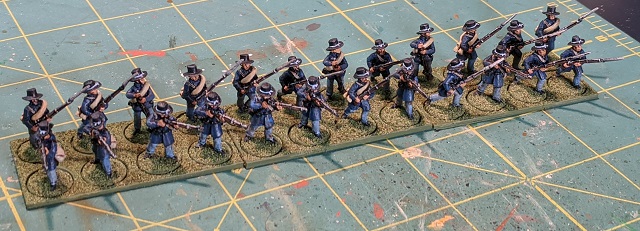
The American Civil War
The defining conflict of American history. Eleven southern states elected to leave the Union because they wanted to continue their practice of slavery and felt Abraham Lincoln, the GOAT, was going to end it. There were a lot of other factors related to slavery involved – the practice being allowed in new states, escaped enslaved people being rounded up and returned, etc. Old Abe and two million men fought to end America’s original sin and ended it with the 13th amendment when the Confederate States had been subjugated.
This is my own personal most interesting period of history, so I find it extremely compelling to play. Sharp Practice provides force lists for both sides through the war but there may be some small changes you wish to make based on where you’re fighting – like late 1864 in Georgia, early 1861 Virginia, etc.

Pros:
- Tons of plastics available from Perry Miniatures.
- Rifled muskets make ranges longer and firefights can be more intense.
- Uniforms were more regulated and easily manufactured so they’re easier to paint and knock out quickly.
- Tons of different artillery pieces to paint.
- First hand accounts of small raids, patrols, skirmishes etc are plentiful for this conflict, so you can easily find great source material for battles / campaigns.
- There is an ACW supplement for Sharp Practice 1st Edition called Terrible Sharp Sword that could be used for 2nd Edition.
Cons:
- Uniforms are not as magnificent as earlier time periods.
- Longer range rifled muskets may make players go to ground earlier and try to firefight instead of maneuvering.
- Cavalry are more of a way to get to the battlefield in this period, oftentimes harassing enemies and raiding supplies, not necessarily riding straight at each other and hitting people with swords.

Terrain: similar to the Rev War, you need fields, fences, stone walls, streams, roads, etc. Buildings will be similar but a bit more modern – there are plenty of MDF options available.
Miniature availability: manufacturers have been making pewter ACW guys for decades available in a ton of different scales. Perry Miniatures makes amazing plastic guys that can fill out the bulk of a force, including artillery and cavalry. Sash and Saber and other manufacturers have filled out plenty of ‘special’ units that aren’t just different uniforms but different branches of the armed forces.
Inspiration: you should start with the PBS Civil War series. It’s a great series (with a few issues) that will tell you everything about the war. For movies I’d recommend Gettysburg, Field of Lost Shoes, Glory, Wicked Spring, and Harriet. There were a few TV mini-series from the 80s that, while they were cheesy and had some bad uniforms, they’re entertaining – North and South and The Blue and the Gray.
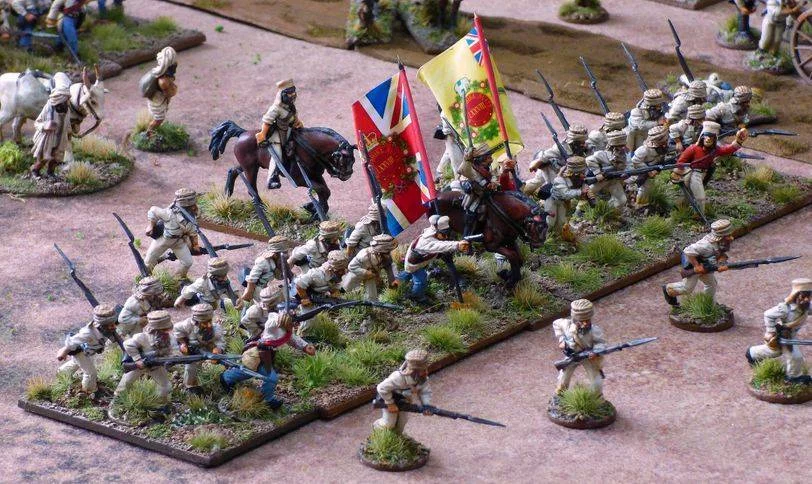
The Indian Mutiny
Gonna be honest, being an ignorant American I had actually never heard of this conflict before I read the Sharp Practice rulebook. ‘Mutiny’ is a weird term for it in my opinion, you can read up more on that here. There were a ton of different factors involved in the rebellion, so much so that I can’t really do it justice here. It was a short war, lasting only 1 year and six months, with some larger results – the East India company was dissolved and the British government created the British Raj, formalizing their government in India.
Pros:
- A much different conflict than the others presented here, in a much different part of the world.
- If you’re looking for an asymmetric war this would be one – one side can definitely bring well-drilled hardened troops while the other brings more troops with less training. The Sepoys have mostly conscripts, wallahs, etc while the British have regulars plus a variety of other troops.
- An excellent learning opportunity for a lesser well-known war. That may sound back-handed, but I really do mean it. I learn a lot of the history I know about from doing wargaming projects.
Cons:
- Sepoys only have one type of cavalry, while the Brits have three, including Impact Cavalry. This isn’t a negative of the book or saying it’s fake news, just that one side had better cavalry.
- Not a huge range of miniatures available.
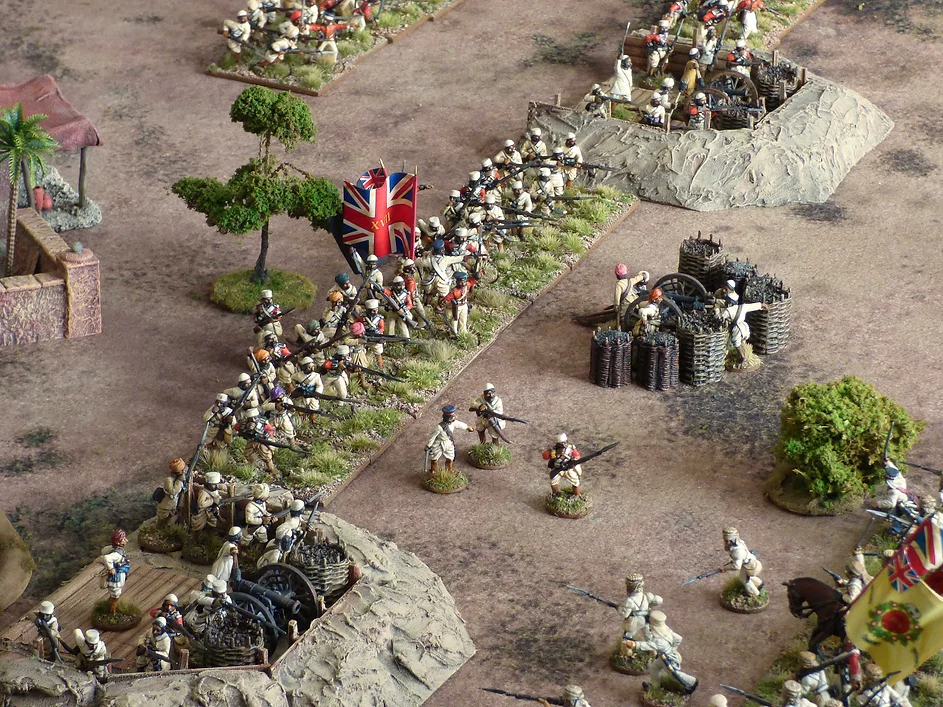
Terrain: I feel like you’d find some good overlap between the Peninsular War napoleonic scrub and this conflict. Terrain could include farmlands and swamps. Some battles were in or near cities so buildings could definitely be used as well.
Miniature availability: Empress Miniatures sells a huge range of minis that pretty much defines everything you need for the conflict. Wargames Foundry also has a huge range of gorgeous miniatures.
Inspiration: I’m not going to pretend to know about this – I have purchased a few non-fiction books so far for my own education, and I know Flashman does some time in India, but I’ll leave this link to the wikipedia article here.
Keep your eye out for more Sharp Practice content in the near future! In the meantime if you have any questions or feedback, drop us a note in the comments below or email us at contact@goonhammer.com.


